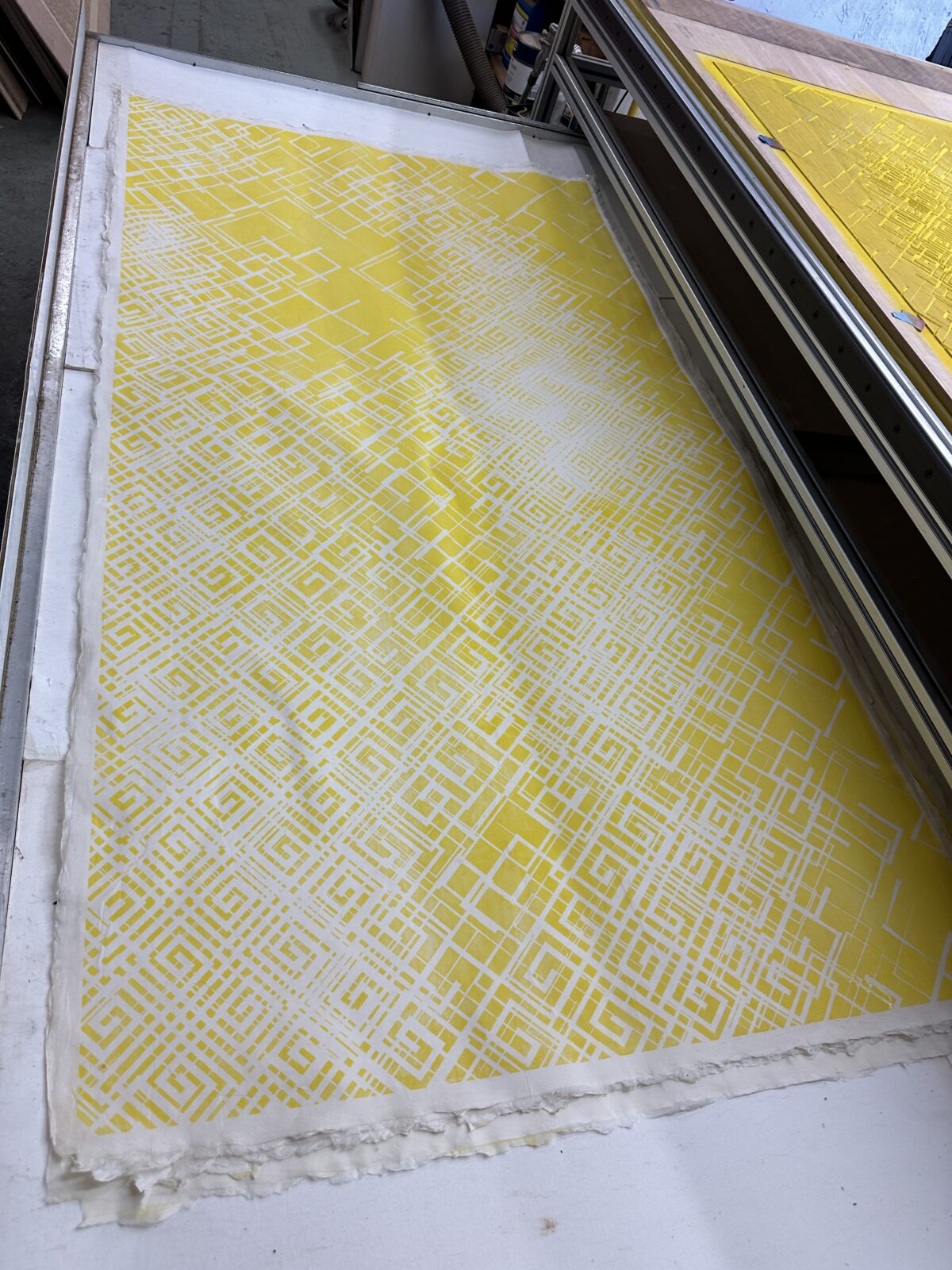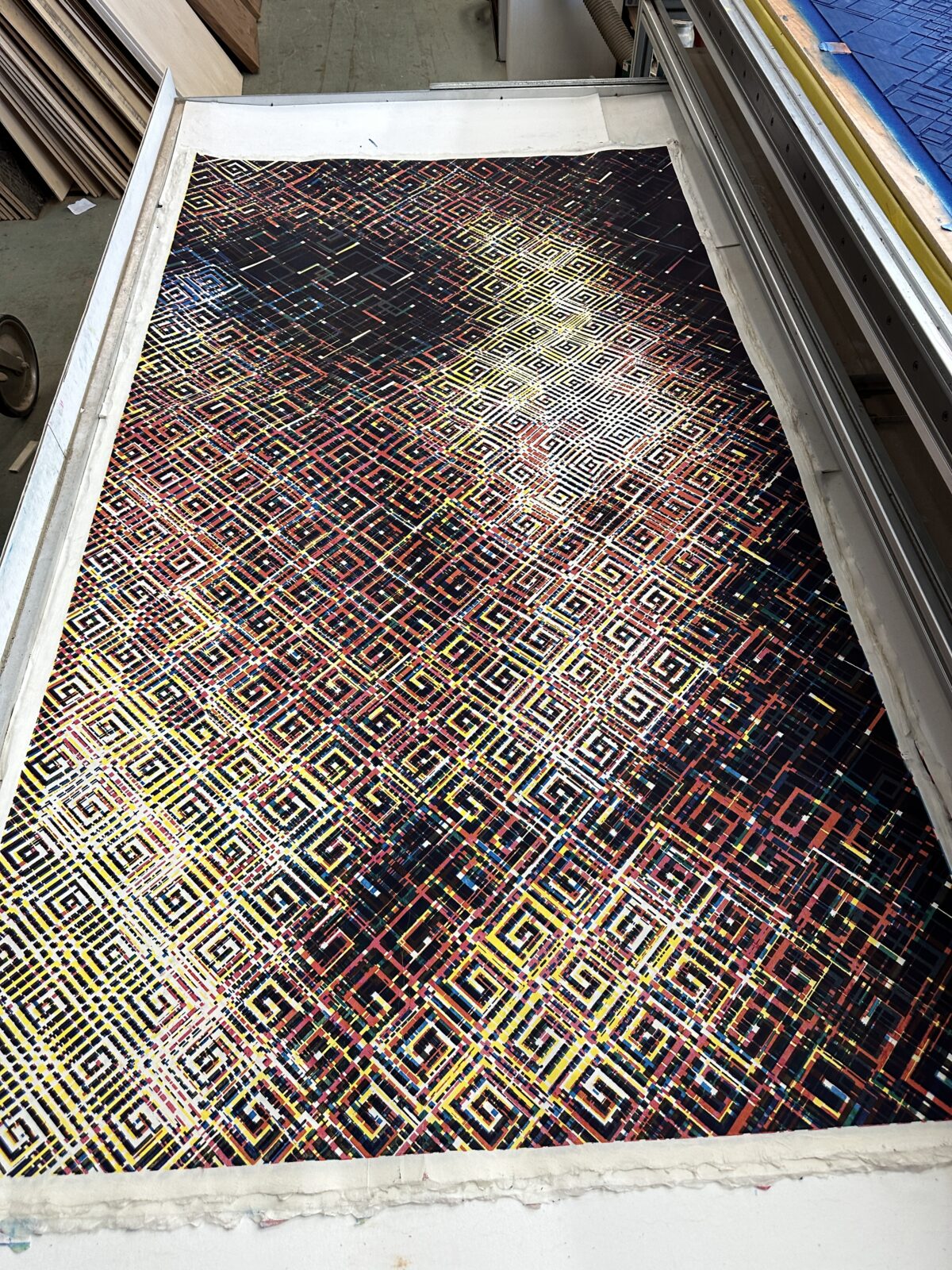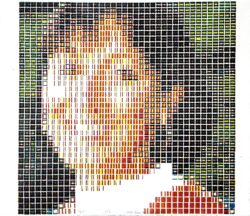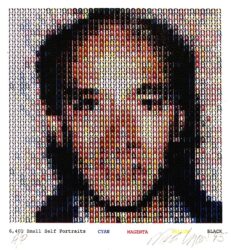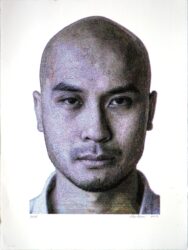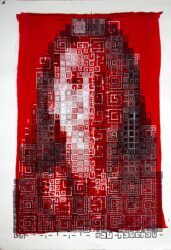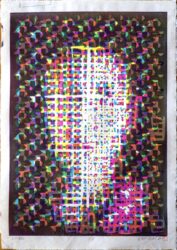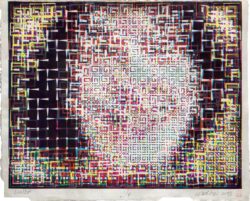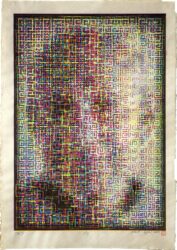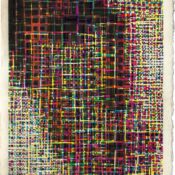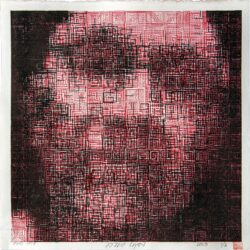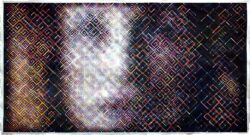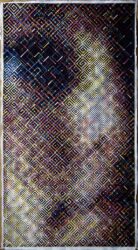MIKE LYON – FROM BLOCKS TO BYTES: MARK MAKING
06.01.24 – 07.14.24
Foundry Vineyards is thrilled to share our newest art exhibition in collaboration with the Mokuhanga Project Space, featuring the pioneering works of Kansas City-based artist Mike Lyon. The exhibition will be on view from June 1, 2024, and run through July 7, 2024, showcasing a collection of Lyon’s innovative mokuhanga (Japanese woodblock prints) that blend traditional techniques with modern technology.
Mike Lyon is recognized for his unique approach to printmaking, which integrates his extensive knowledge of computer technology with the ancient art of mokuhanga. This exhibition highlights the evolution of Lyon’s work, from his early hand-carved prints to his latest digitally abstracted, machine-carved pieces. Lyon’s process is a fusion of traditional craftsmanship and cutting-edge technology, where he programs computers and builds machinery to manipulate art-making tools, creating intricate and precise prints.
Lyon’s work often portrays faces, figures, and botanicals, with each piece meticulously planned and executed through a calculated series of marks, lines, and brush strokes. His childhood interest in Japanese art and culture is evident in his collection of Japanese ukiyo-e prints, and his formal art studies under Hiroki Morinoue and Hidehiko Goto further honed his skills in mokuhanga.
The exhibition will provide a broad look at the progression of Lyon’s work, starting with his earlier hand-carved prints in a “posterized style,” followed by some of his initial machine-carved prints. The show transitions from more realistic photographic images to the digitally abstracted complex images he creates today, illustrating how technology has transformed his depiction of figures.
Featured Artist
Mike Lyon is a full-time artist in Kansas City, Missouri. Lyon received his BA from the University of Pennsylvania, his BFA from the Kansas City Art Institute, and studied moku-hanga (Japanese woodblock printmaking) under Hiroki Morinoue and Hidehiko Goto. He currently sits on the boards of the Anderson Ranch Arts Center in Snowmass, Colorado, the Tamarind Institute of Lithography in Albuquerque, New Mexico, and the International Mokuhanga Association in Tokyo, Japan.
Lyon is a pioneering figure in the field of post-digital printmaking. In his work as a printmaker, Lyon combines his knowledge of technology, cultivated during his 13 years as a computer hardware and software developer, with his formal art study. His invention of award-winning computerized order-filling systems for Tupperware and others is an integral part of his printmaking methods today. He has adapted the computer-controlled router to carve blocks, apply paint to canvas, and put pen to paper. Equally relevant in his work is Lyon’s childhood interest in Japanese art and culture, which is reflected in his collection of Japanese ukiyo-e prints.
My work is a long series of experiments in ways to communicate image through an unusual kind of mark-making. My process is complex and analytical and involves programming computers and building machinery to manipulate traditional art-making tools, materials, and imagery using non-traditional methods. I’m looking to the old while inventing (sometimes re-inventing) the new. I typically portray the face, figure, or botanicals like grass or leaves. The creative work is almost entirely conceptual, occurring inside my head. Because every mark, line, or brush stroke is calculated in advance, I don’t get to see the results until the work is complete.”
Lyon’s work and process are featured in Paul Cantanese’s and Angela Geary’s Post-Digital Printmaking: CNC, Traditional and Hybrid Techniques (2012, Sylvie Covey’s Modern Printmaking: A Guide to Traditional and Digital Techniques (2016), April Vollmer’s Japanese Woodblock Print Workshop: A Modern Guide to the Ancient Art of Mokuhanga (2015), Barbara Thompson’s The International Block Print Renaissance: Then and Now (2021) and others.
His work is in the permanent collections of Nelson Atkins Museum of Art; Daum Museum of Contemporary Art; Kemper Museum of Contemporary Art; Miriana Kistler Beach Museum of Art; Bernard A. Zuckerman Museum of Art; Springfield Art Museum; Spencer Museum of Art; Art Museum at the University of Kentucky; New York Public Library, Wichita Art Museum.
About Mokuhanga Project Space
Mokuhanga Project Space’s mission is to promote and support mokuhanga by exploring new dimensions of the art form in a global context. We bring in artists who are actively working to expand the field of mokuhanga through conceptual exploration, innovation in technology, and active engagement with the world. Mike Lyon’s work has explored many of these facets over the years, showcasing the progression of the use of computers and technology in his work. This exhibition starts with some of his earlier “posterized,” followed by one of the very early machine-carved prints. The show then transitions from more realistic photographic images to the more digitally abstracted complex images he is making today, illustrating how technology has impacted the way he depicts figures.
Lyon is the invited artist in residence at Mokuhanga Project Space from June 17 through June 27.
Exhibition List
In the early stages of his artistic journey into printmaking, Mike Lyon embarked on a series of experiments that explored the intersection of digital imagery and traditional painting techniques. These initial compositions were created using square ’tiles,’ meticulously colored and arranged in grids to form recognizable images, often portraits. He began by composing and displaying these images on his computer monitor, treating the large pixels as a form of still life. Lyon painted these digital compositions from life, replicating the pixels as tangible objects. He aimed to discover the minimal number of colors and tiles required to convey a meaningful image.
The image for “6401 Small Self Portraits” was derived from a 1988 photo-ID. the title reflects the number of self portraits used to create the final image, plus one for the complete piece. The artwork occupies a 40 x 40 grid, resulting in 1,600 cells, each a tiny self-portrait. Using four colors, each cell is printed four times – blue, red, yellow, and black – resulting in 6,400 individual prints and a final integrated self-portrait image.
In creating this image, Lyon designed five small black and white self-portraits, each covering increasing amounts of ink in 25% increments. He wrote computer programs to analyze and apply these portraits to each of the 1,600 cells for each of the four colors. The yellow, blue, magenta and black images were laser printed on paper, transferred to litho plates, processed, and printed sequentially.
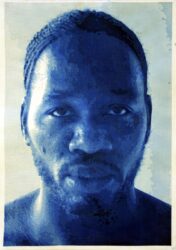
“Anthony” is the first print Lyon made using a CNC router modified to carve wood blocks for his relief prints. Before automating his carving process, Lyon cut his blocks by hand, creating prints using traditional Japanese printmaking techniques. “Anthony” was printed in Prussian blue from fifteen cherry plywood blocks. Lyon used the Japanese technique of printing in shades of blue, or aizuri-e (blue printed pictures), popular in Japan during the 1820s to 1840s wit the availability of Prussian blue, a stable and lightfast synthetic pigment imported from Europe.
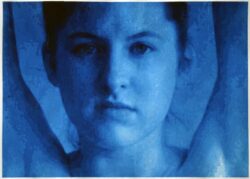
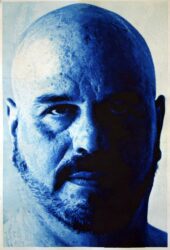
In 2018, Mike Lyon created his first medium-scale square spiral paintings utilizing acrylic paint pens. Lyon designed and built a special jig to facilitate this process. The chosen paint pens, made by Molotow, feature a fibrous tip that needs to be recharged periodically by pushing it into the pen’s body. This ensures a consistent mark, although it requires frequent recharging every few feet of paint to prevent the pen from running dry. Lyon wrote custom code into his spiral drawing program to accommodate this requirement. The code included instructions for pen recharging, allowing the painting process to proceed smoothly.
He experimented with various techniques, such as painting directly onto the paper or preparing the paper with an acrylic ground before applying the image. The paintings were conceived in layers, each composed of ’tiled’ square spirals. The ‘tightness’ of each spiral was determined by the average value of the reference image in the corresponding area. The initial results of these experiments were intriguing, leading Lyon to create more paintings on this scale.
To expedite the image-making process, Lyon innovated by machining several thousand half-inch cubes, each with a distinct fraction of its surface removed. These cubes could be arranged in grids, inked, and used to pull a relief print. After each print, he cleaned and rearranged the cubes, re-inked them, and performed an overprint. This repetitive yet engaging process resulted in layered, intricate images. A notable work from this period is the portrait of his sister, “Pat” (1994), which involved four over-printings of 1,444 cubes arranged in a 38 x 38 grid. This method allowed for a dynamic interplay of color and form, creating a rich and textured representation.
“Madz” is part of Mike Lyon’s series of images composed of code-generated spirals, where the number of wraps relates to the average lightness or darkness of a reference image. He developed the initial code for this process in 2018 and continually updates it for new capabilities. Lyon has used MS Visual Studio for coding since 2003.
The “Spiral Image Generator” has evolved significantly through frequent modifications, with no earlier versions retained. In “Madz,” Lyon uses four blocks printed in order: gray, yellow, red, and blue, with pigments ranging from least to most transparent. Each block’s spirals are cut away, allowing uncarved areas to show through, creating secondary colors like orange, purple, green, and brown.
For prints made in 2023, Lyon varied the spiral line thickness while maintaining overall density, adjusting diameters, densities, and shapes until the design met his aesthetic criteria. In the block plans, the white areas are ‘carved away,’ and the blocks are ‘brushed up’ with their respective colors.
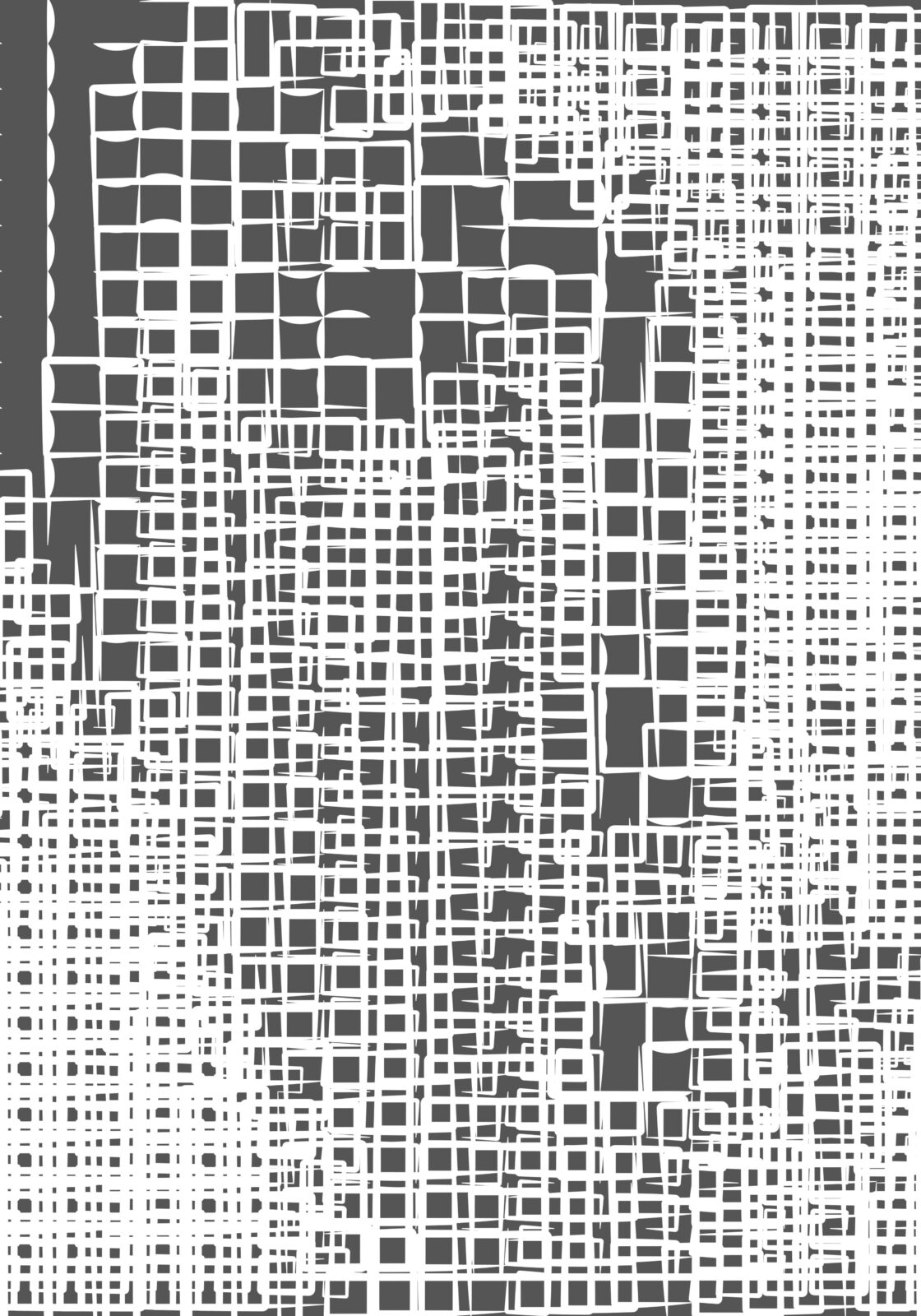
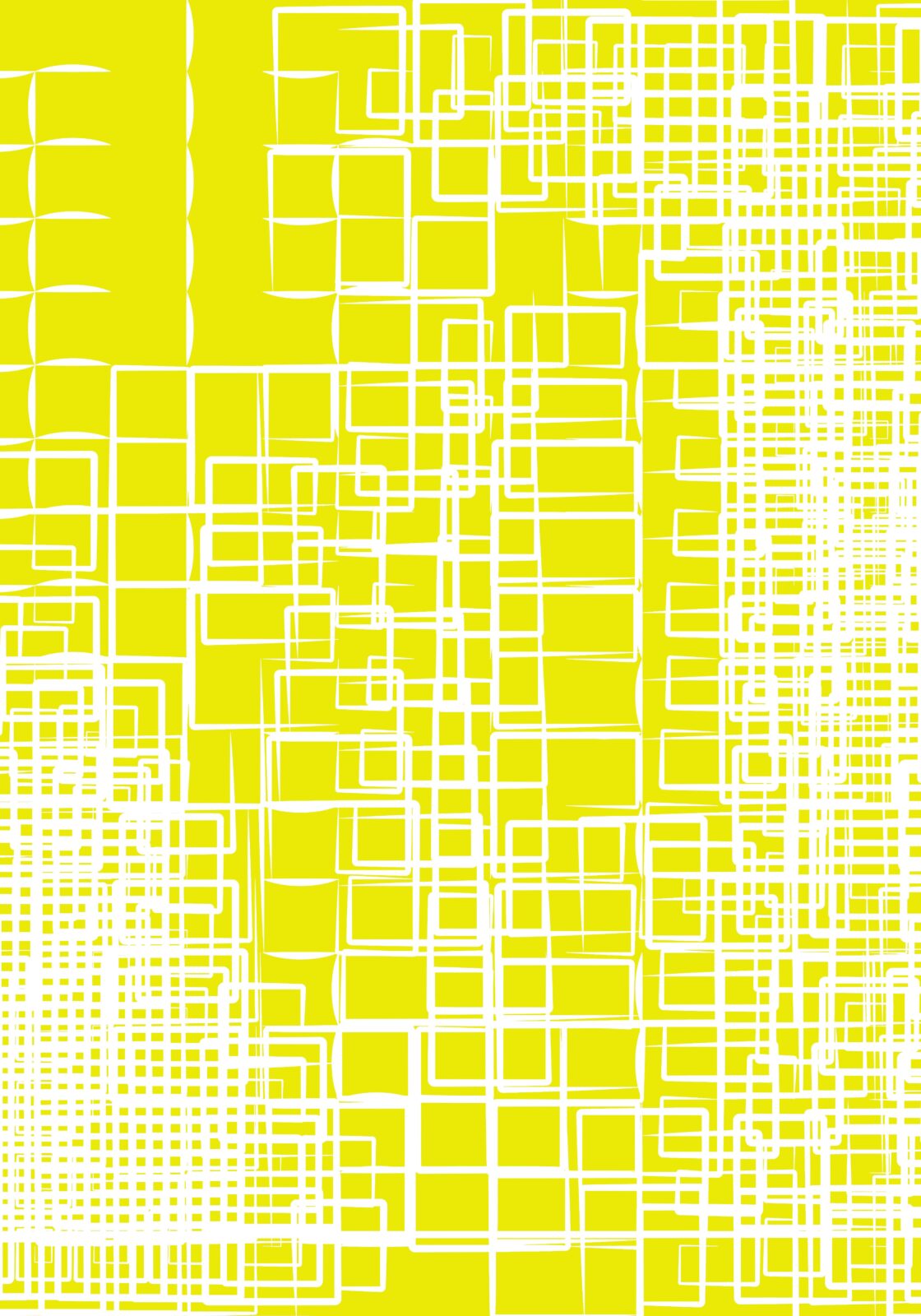
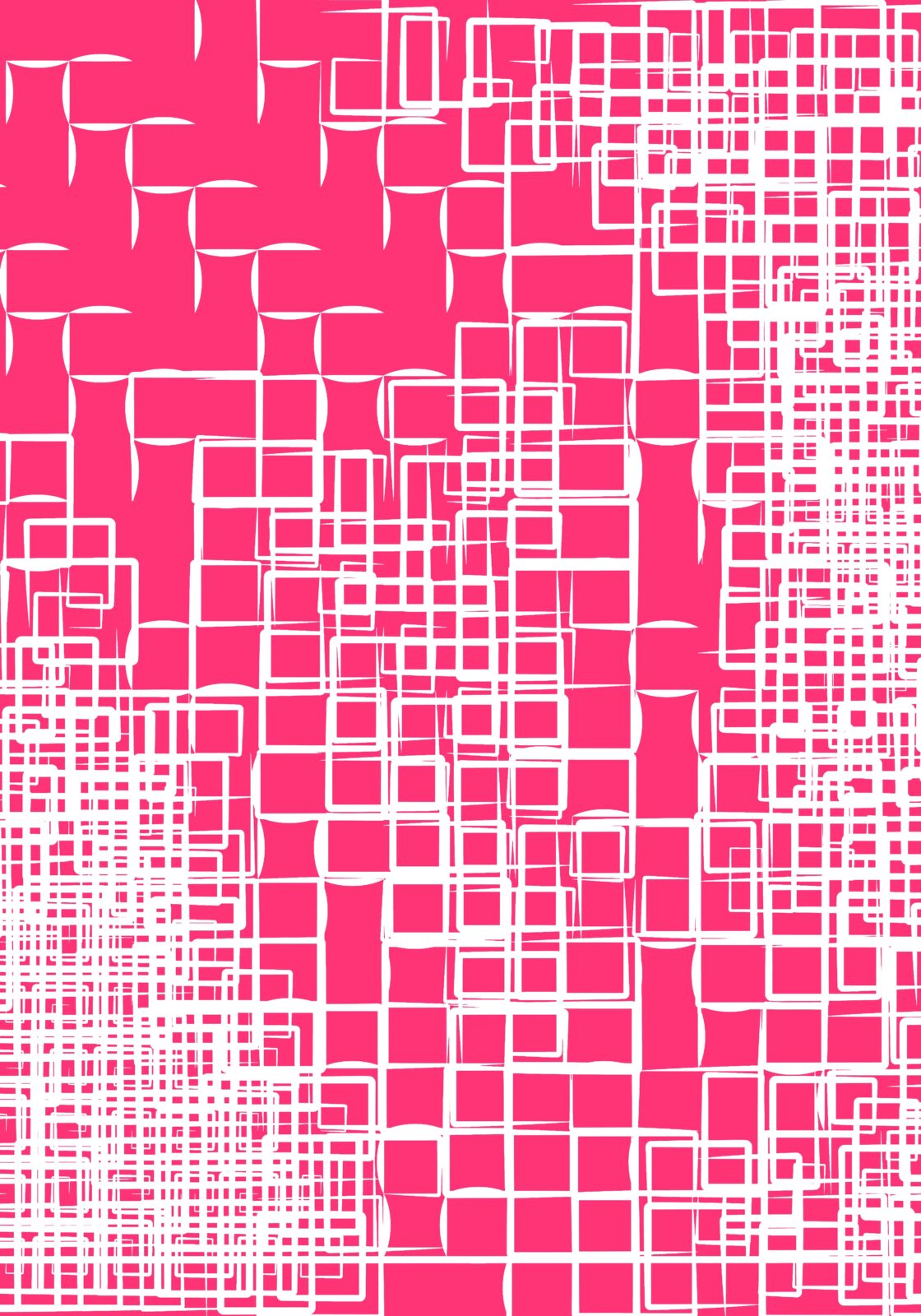
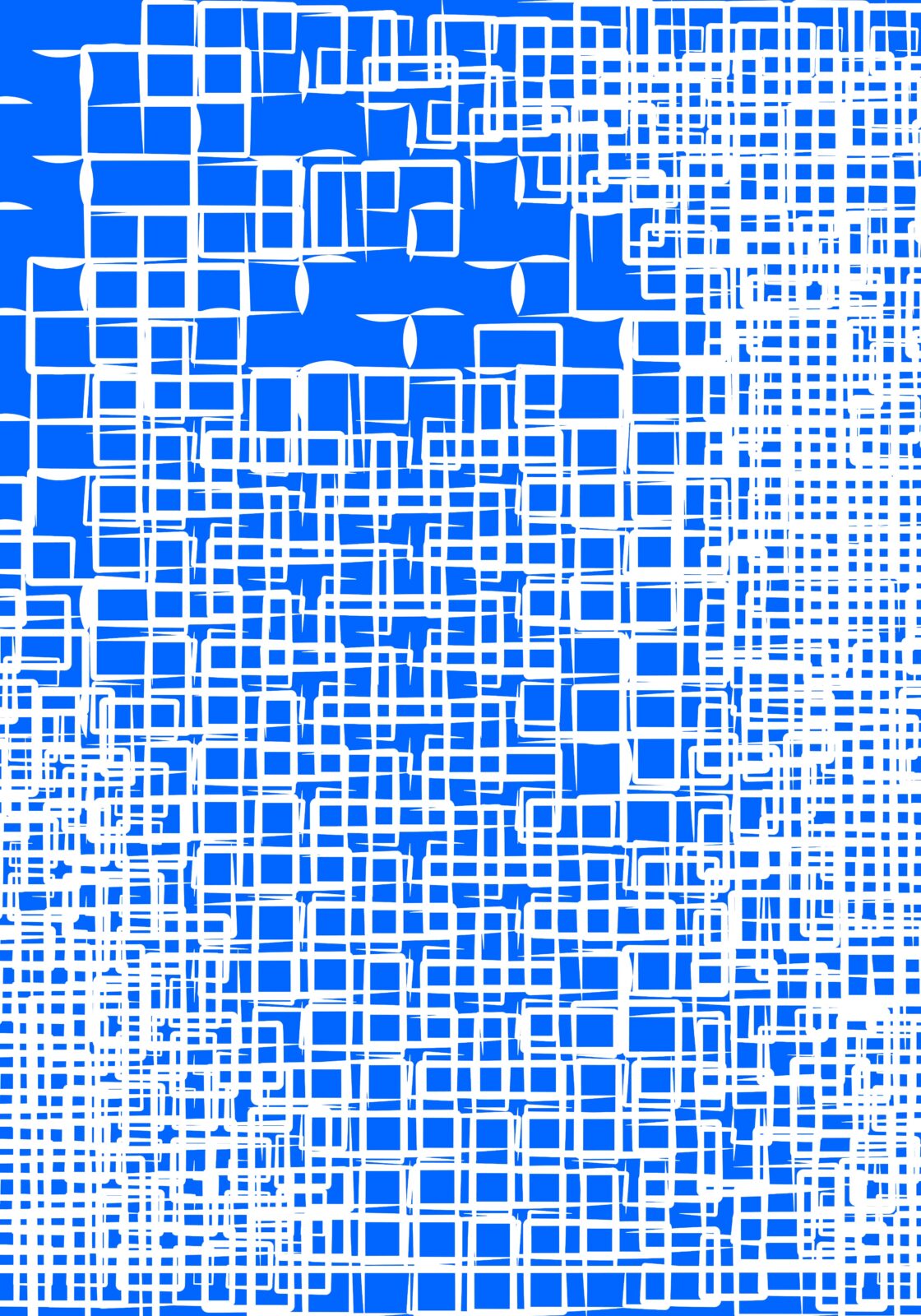
State of “Danielle” after each printing:
